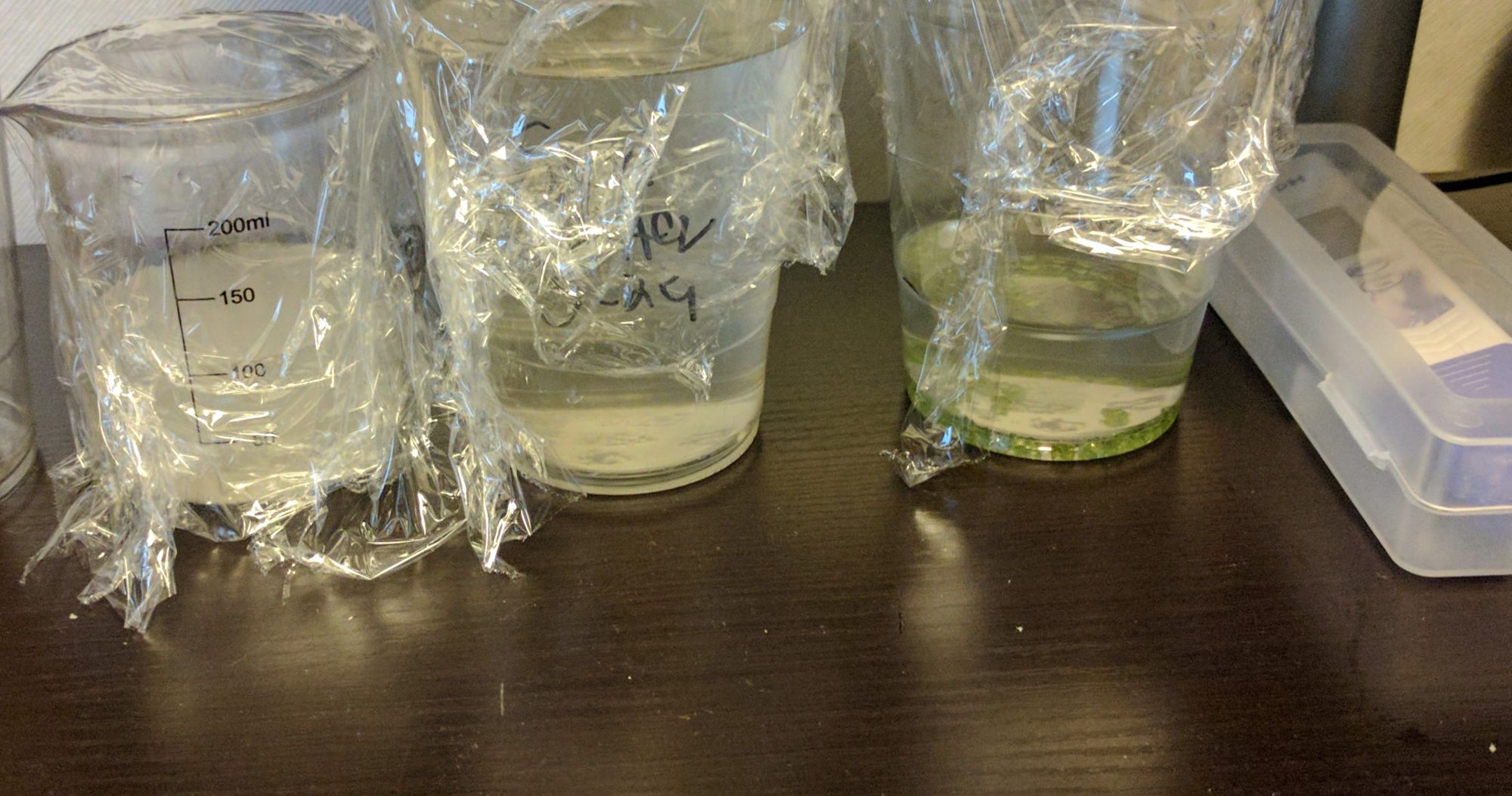There are several academic papers available online talking about ocean acid reduction. To get started, we wanted to ensure our equipment is able to successfully measure PH level, and that we are able to successfully reduce ocean acid using known compounds. Additionally, we wanted to determine if olivine (peridot) is able to reduce ocean-water acid in-water.
Experiment 1 – Calcium Carbonate
Experiment
Measure Acidity of Ocean water before and after Calcium Carbonate is added
Hypothesis
Adding Calcium Carbonate to ocean water will reduce acidity of ocean water
Procedure
- Calibrate pH meter with tap water (Hoboken, NJ)
- Gather Ocean water from Hudson river (Hoboken, NJ, Sinatra Park)
- Measure Ocean water acidity 100ml
- Add 1/2 tbs of CaCO3 to 100ml ocean water
- Stir for 1 minute
- Measure acidity of Ocean Water
Observations
- 5-29 2:03pm: Ocean water became milky in color, 1/2 tbs for 100ml was probably way too much. After stirring pH of ocean water rose and settled at 7.66
- 5-29 2:14pm: Letting pH meter sit in the solution for ~ 10 mins, the pH rises further to 7.70, going to let things sit for 1 hour and see what happens
- 5-29 2:33pm: 7.87 pH observed
- 6-3 11:38pm: 7.77 ph observed
Data
| Units | ||
| pH of tap water | 7 | pH |
| temp of tap water | 21 | C |
| temp of ocean water | 21 | C |
| pH of ocean water before CaCO3 | 7.43 | pH |
| pH of ocean water after CaCO3 added 10 minutes | 7.7 | pH |
Analysis and Conclusion
Adding CaCO3 to ocean water leads to reduction of measured acid in the ocean water solution
Experiment 2 – Peridot (Olivine)
Experiment
Measure Acidity of Ocean water before and after Olivine is added
Hypothesis
Adding Calcium Carbonate to ocean water will reduce acidity of ocean water
Procedure
- Calibrate pH meter with tap water (Hoboken, NJ)
- Gather Ocean water from Hudson river (Hoboken, NJ, Sinatra Park)
- Measure Ocean water acidity 100ml
- Add 1 tbs of Peridot gem to 100ml ocean water
- Stir for 1 minute
- Measure acidity of Ocean Water
Observations
- 5-29 2:29pm: Ocean water 7.55pH
- 5-29 2:30pm: Adding peridot to ocean water
- 5-29 2:31pm: After stirring 7.6pH
- 6-3 11:39pm: 7.70pH
Data
| pH of tap water | 7 | pH |
| temp of tap water | 21 | C |
| temp of ocean water | 21 | C |
| pH of ocean water before CaCO3 | 7.51 | pH |
| pH of ocean water after peridot added 10 minutes | 7.7 | pH |
Analysis and Conclusion
Adding Olivine to ocean water does not significantly impact measured acid in the ocean water after a day.
